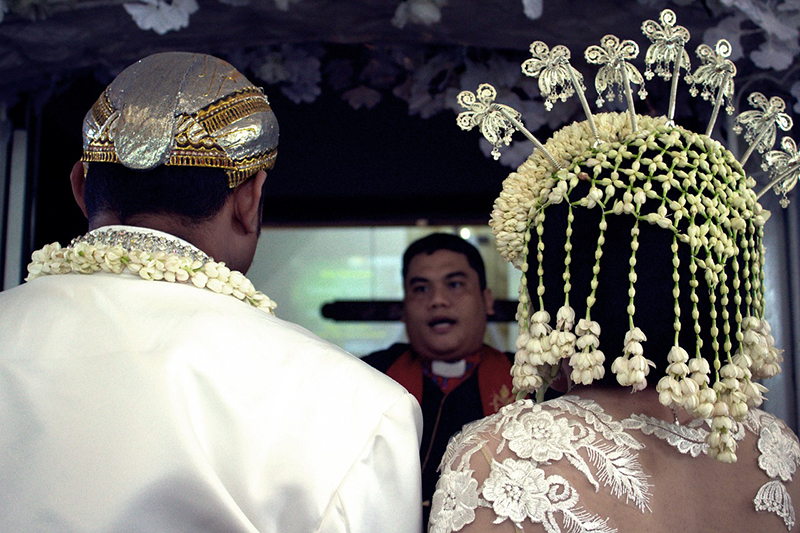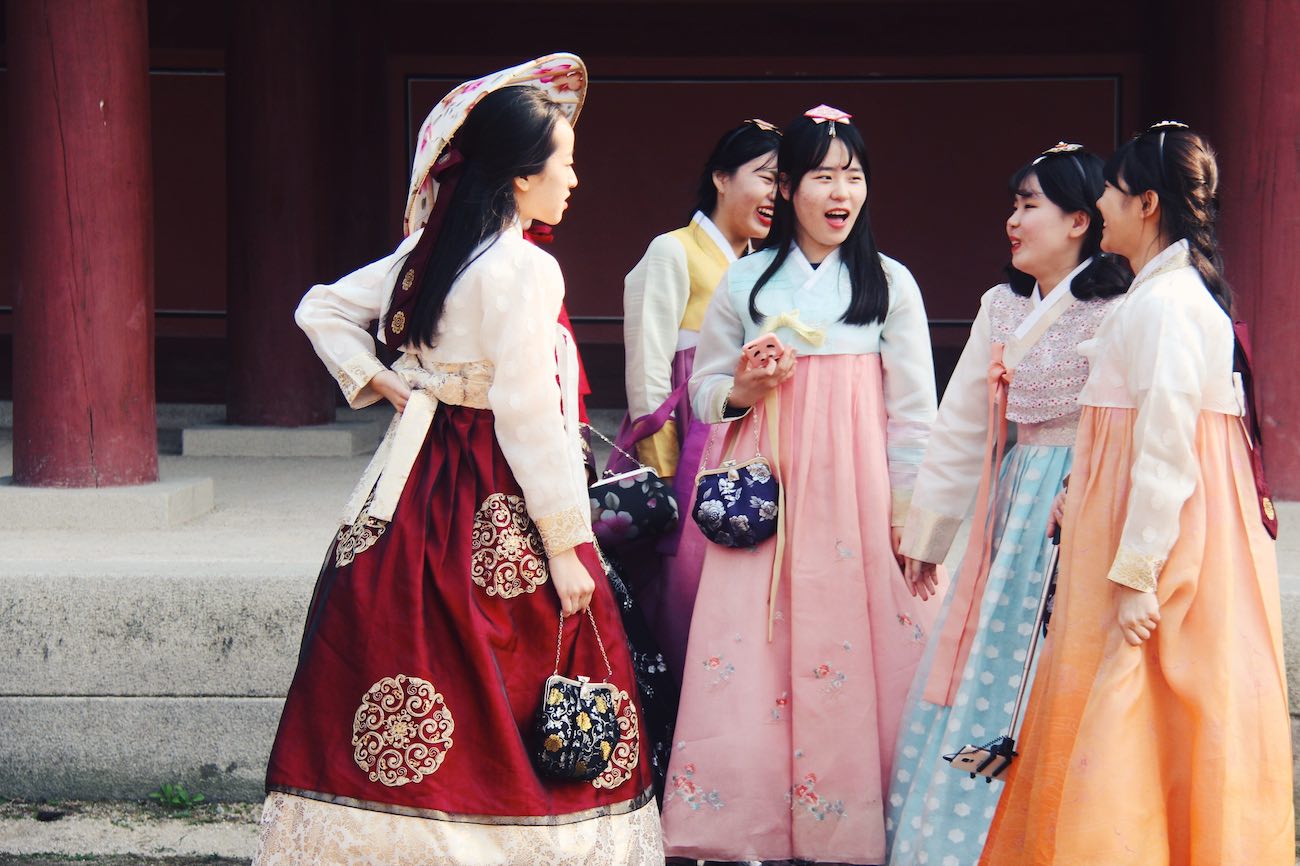Germany has lederhosen, Japan has the kimono, Connecticut has Polo shirts and Korea has hanbok(한복). But what exactly is hanbok and most importantly, how can you get your hands on some of these wonderful articles of clothing and wear some for yourself?
The origins
The true beginning of these wonderfully designed and fabulously colorful sets of clothing are said to go back to the Joseon era (1392-1897), which is what modern hanbok is usually a reflection of, but the precedents for hanbok go back much further in Korean history, over one thousand years ago.
During the Joseon era though, hanbok and clothing of this style were worn every day. The different colors, symbols, designs and levels of intricacy of ones clothing reflected profession and social status. The general design of hanbok and the special rules, shapes, fabric, materials, colors, patterns, symbols and accessories all tell a story and all have symbolic and spiritual significance.
These rules and significance are mostly drawn from Confucianism and later Neo-Confucianism, which were both the official state religious philosophies and forms of government during Korea’s Joseon period. Symbolism from Taoism, Buddhism and Korean shamanism also play a role in hanbok’s unique, beautiful, lavish and exotic appearance.
Hanbok: When To Wear?
Today, hanbok has made a big comeback thanks in part to Hanryu/Hallryu(한류) or “Korean Wave”. Hanbok inspired modern fashion pieces as well as traditional style hanbok are relatively common-place throughout Korea and other parts of the world today.
Baby Birthdays, Weddings
Hanbok is typically worn during holidays like Chuseok and Seolnal, during a baby’s Dol, which celebrates a baby’s first birthday, or a couple’s wedding, in which friends and family may wear hanbok and the bride and groom will wear a set of hanbok designed in the style of a Joseon king and queen as well as slightly more casual hanbok during the wedding reception.
Funerals
Black and white hanbok may also be worn during funerals. Hanbok is known to be bright, vibrant, vivacious and expressive and so black hanbok in particular is almost only ever worn for funerals, while white hanbok was the tradition color worn by most social classes during the Joseon era.
Tea Ceremonies, Cultural Events
In addition to these events or gatherings, people can be found wearing hanbok at Korean tea ceremonies and other cultural events, around Gyeongbokgung palace and at many of the hanok villages like in Jeonju. Near the latter sites, hanbok rental shops are common place and one can have the fun experience of wearing hanbok of various styles, patterns and designs. One can dress like a king or queen, like a scholar-official, a royal guard or even a gisaeng, a type of female entertainer of the Joseon era.
How to wear hanbok
As mentioned above there is different hanbok for different events and there are particular ways to wear each article of clothing found in each different set of hanbok. So let’s take a look at a few different outfit sets and how the items are all worn in an ensemble.
Men’s hanbok
For men’s typical hanbok the outfit will usually consist of a wide sleeved shirt called a jeogori , a vest or jokki and baji or baggy pants as well as special slipper-like shoes. A traditional round, black horsehair hat known as a gat may also be included as well as a large, wide overcoat known as a durumagi. For those renting hanbok these additional items may cost a bit extra. To wear men’s hanbok properly, the baji, or pants should go on first. There may be some strings to tie around the waste along with a Velcro strap and a zipper to fasten the top of the pants. The ankles will also have short, thick adjustable strings to fasten the openings around your ankles. Next, one can put on the top shirt. This may also have fabric pegs to fasten the neckline. After this, the vest is put on. This one may be a bit tricky because the tassels that form the bow on the front should be tied a special way, while a pin or fastener can close the vest up. The vest is meant to be a bit shorter and tighter, while the pants and shirt and baggy and long. As for the gat, it will be tied and fastened on the head with special tassels, too. And the durumagi is also to be pinned off to one side and fastened with a belt.
Women’s hanbok

Women’s hanbok includes a large, wide, flowing skirt known as a chima. Another garment is the wide sleeved jeogori shirt and then a short vest as an overcoat. Some style of hanbok may include an intricate woven wig or a wide brimmed circular hat that is fastened with ribbons and strings. A hairpin and other ornaments that have spiritual and symbolic significance may also be included and are different based on the occasion, ones age, ones marital status and ones social status. A long pair of white socks and slightly curved and sometimes heeled shoes may also be included with women’s hanbok.
To wear this hanbok properly, first, put on the long white socks, next put on the chima skirt, this will usually be attached to a thin sleeveless top garment. This is not a complete outfit though without a jeogori over the thin top garment. Fasten and zipper the back of the chima and then put on the top long sleeved jeogori. Like the men’s shirt, this one will be able to be fastened and strapped to one side in order to keep it closed. Next, the vest is put on over the long sleeved shirt. And its fabric tassels can be tied into ribbons and fastened accordingly. Traditionally, a women will wear their hair braided and bound in a certain style, again depending on age, rank and marital status. Usually young and unmarried girls and women will wear their hair in a single braid in the back. Married women can have their hair bound or in an up do similar to the Joseon era styles. Both men and women can wear a magoja, which is a type of jacket worn over the jeogori and the vest.
Children’s hanbok

The hanbok for children is of course similar to that worn by adults with a few distinctions. Children may wear what is called a ggatchi durumagi, which is a long and colorful overcoat fastened in the front with a ribbon. These coats are very splendid and have colorful sleeves decorated with alternating color patterns. In addition to this little overcoat, a cloth head wrap known as a bokgeon may also be worn. This cap is usually black and has a peaked top and fabric that extends down the back. Girls may wear a gulle, which can be black or very colorful and wraps around the head and ears.
Wedding hanbok
Wedding hanbok resembles the clothing worn by the king and queen during the Joseon era. Colors can vary but the traditional colors are blue for the groom and red for the bride. The blue represents the dragon and the red, the phoenix. The dragon and phoenix represent the harmonious pairing of the male principle, represented by the aerial and amphibious Eastern dragon and the fiery and airy feminine principle that the Eastern Phoenix conveys. This is a more animated expression of the concept of yin and yang which is a philosophical tradition that extends throughout Korean society and even into the design of hanbok, too. This type of hanbok is often worn during a couple’s p’yebaek or during a whole wedding ceremony depending on how traditional the service is!
For more information about Korean weddings, please visit the below page:
The Groom’s hanbok
This hanbok includes a large overcoat that is worn over another outfit, most likely standard hanbok. This overcoat is adorned with a vestigial belt around the waste that is hard and more ornamental than functional. A headdress similar to the one Korean kings would wear is also worn atop the head and a pair of black boots that reach to the knees may also be worn.
The Bride’s hanbok
The bride’s hanbok is truly exquisite. Her hair may be braided in a particular way and she will wear many hairpieces, like one long hairpin in the back just below her ears that holds flowing tapestry-like fabric adorned with intricate designs. She may also wear a large black headdress atop the head that is rounded and black and covered with gems and special pins. Over the bride’s standard hanbok or other clothing she will wear a red, flowing gown with large, wide sleeves that are lavishly ornate. The bride will also usually have two small red blush marks taped or painted on her cheeks. Another key feature is the large white fabric sheet that may be plain white or embellished with designs or Classical Chinese characters. This sheet is used to catch jujubes and chestnuts during the p’yebaek.
Traditional electrifies the modern
Come and discover the amazing and rich cultural tradition of hanbok! Whether you are exploring the palaces of Seoul or enjoying the cherry blossoms in Jeonju, or even celebrating Korean Lunar New Year, wearing hanbok is the perfect way to immerse oneself in Korean culture. Thousands of years in the making have crafted and weaved life into hanbok. A life which is as rich and illustrious today as it was during the height of the Joseon dynasty!
Sources:
- “Hanbok.” Wikipedia, Wikimedia Foundation, 5 Dec. 2019, en.wikipedia.org/wiki/Hanbok.
- Ladner, Mimsie. “Hanbok: An Introduction to South Korea’s National Dress.” Culture Trip, The Culture Trip, 25 Jan. 2017, theculturetrip.com/asia/south-korea/articles/hanbok-an-introduction-to-south-koreas-national-dress/.
- “Weather 12-18-2019.” Visitkorea, english.visitkorea.or.kr/enu/AKR/AK_ENG_2_2.jsp.



No Comments